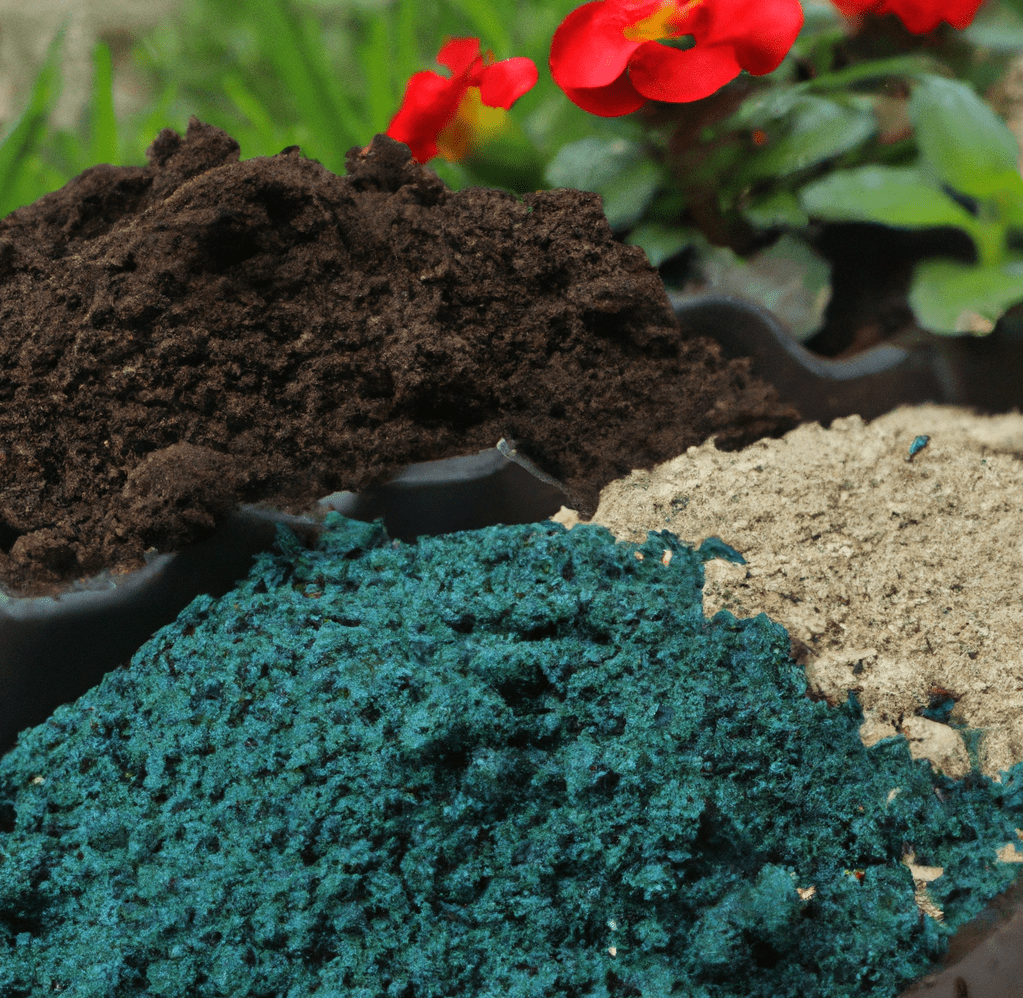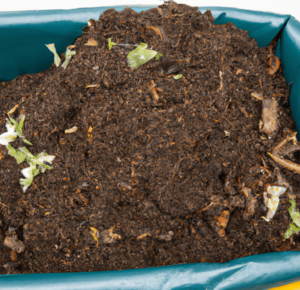To maintain your plants and grass healthy and thriving, you must fertilize your garden. The envy of your neighbors, a lush and healthy garden may be yours with the correct fertilization regimen. Using slow-release fertilizers is one of the best ways to guarantee your garden has the best fertility possible. We’ll discuss the benefits of using slow-release fertilizers in your garden in this article!

What are Slow-Release Fertilizers?
A form of fertilizer known as slow-release fertilizer slowly delivers vital nutrients into the soil over time, usually over a few weeks or months. Slow-release fertilizers give your plants and grass a constant stream of nutrients as opposed to regular fertilizers, which release all of their nutrients at once.
The benefits of using slow-release fertilizers in your garden include minimizing the possibility of over-fertilization and encouraging healthy growth by allowing the plants to absorb the nutrients over a longer time. Any good gardening program must include fertilization. Your plants and grass may get stunted, yellow, or even die if you don’t fertilize them properly.
How Slow-Release Fertilizers Work
Slow-release fertilizers are intended to fertilize gradually and consistently, as opposed to quick-release fertilizers, which release a huge amount of nutrients all at once. Slow-release fertilizers are sprayed on the soil, where they slowly disintegrate and gradually release the nutrients they contain. This makes it possible for the grass and plants to receive the nutrients they require gradually rather than all at once. Nitrogen is slowly released, which helps keep plants and grass from experiencing fast growth spurts that can cause weak or spindly growth. Additionally, the benefits of using slow-release fertilizers in your garden include minimizing the chance of over-fertilization, which can burn or harm plants, making them perfect for usage in locations with delicate plants.
The Technology Behind Slow-Release Fertilizers
Slow-release fertilizers use technology to deliver important nutrients to plants and grass in a predictable and regulated manner. The nutrients are contained under a specifically created coating that slowly deteriorates over time as part of the slow-release method. The nutrients can be released into the soil in a controlled manner thanks to this progressive deterioration, giving the plants an ongoing source of nutrients.
Slow-release fertilizers come in both organic and inorganic varieties. While organic slow-release fertilizers are often manufactured from natural ingredients like compost or bone meal, inorganic slow-release fertilizers are typically made from synthetic materials. The best slow-release fertilizer for your plants will depend on your particular requirements and tastes because both varieties have different advantages and drawbacks.
Since the rate at which the nutrients are given can be easily controlled, inorganic slow-release fertilizers are typically more dependable and constant. On the other hand, organic slow-release fertilizers are frequently more environmentally friendly and offer extra advantages like enhancing soil structure and encouraging healthy soil biology. For example, you may know all about the role of compost tea in plant growth and will choose that over a chemical product.
Comparison to Traditional Fast-Acting Fertilizers
Gardeners have two major options when it comes to feeding grass and plants: fast-acting and slow-release fertilizers. While both kinds of fertilizers supply necessary minerals like nitrogen, they function differently when it comes to how quickly they are released into the soil. Fast-acting fertilizers release a lot of nitrogen into the soil all at once, as the name suggests. This gives grass and plants an immediate boost of nutrients, but the results are transient.
Fast-acting fertilizers can also be quickly washed away by irrigation or rain, necessitating frequent reapplication. Slow-release fertilizers, on the other hand, deliver a controlled and gradual delivery of nitrogen over a longer time. As a result, plants and grass receive nutrients more steadily, which encourages steady development and lowers the chance of overfertilization.
Benefits of Using Slow-Release Fertilizers
Here are some of the benefits of using slow-release fertilizers in your garden:
- Promotes Healthy Bloom: Slow-release fertilizers give your plants a steady supply of vital nutrients, encouraging healthy development and a profusion of blooms. Your plants will get the nutrients they require over a longer period of time with slow-release fertilizers, leading to stronger stems, bigger blooms, and more brilliant foliage.
- Lessens the Need for Regular Fertilization: Slow-release fertilizers gradually release their nutrients, lessening the demand for frequent fertilization. The gardener will have to put in less time and effort, and there will be less danger of overfertilizing and harming the plants.
- Enhances Soil Health: Slow-release fertilizers can enhance the health of your soil by gradually releasing vital nutrients. Slow-release fertilizers support a healthy soil biology and structure by supplying a steady supply of nutrients; this can improve the general health of your plants.
- Ideal for Turf Grasses: Since slow-release fertilizers give nutrients steadily and consistently over a longer period of time, they are very helpful for turf grasses. This encourages healthy development and helps avoid the yellowing and stunting that conventional fertilizers may cause.
Reduced Risk of Over-Fertilization and Nutrient Burn
Diving into the benefits of using slow-release fertilizers in your garden, you can reduce the risk of over-fertilization and nutrient burn. When too much fertilizer is added to the soil, it results in over-nutrient accumulation, which can hurt or even kill plants and grass. Too much nitrogen in the soil can result in a nutritional burn, which can cause the plants to yellow, wilt, or even die. In lawns, where excessive fertilizer can result in brown spots and ugly discoloration, this is particularly true.
Slow-release fertilizers help lower the chance of over-fertilization and nutrient burn by supplying a steady and regulated release of nitrogen. This promotes healthy and long-lasting growth by enabling the root systems of plants and grass to absorb the nutrients they require in a balanced and regular manner.
Improved Plant Health and Growth
Another one of the benefits of using slow-release fertilizers in your garden is enhanced plant growth and health. Slow-release fertilizers support strong development and a profusion of blossoms in your plants and grass by supplying a steady and controlled supply of vital nutrients.
Nitrogen is a crucial ingredient for plant growth. Nitrogen is crucial for the growth of plants and the formation of sturdy stems and leaves. It’salso necessary for the production of chlorophyll, the pigment that gives plants their distinctive green color. Slow-release fertilizers ensure that your plants always have access to this crucial nutrient by slowly releasing nitrogen into the soil.
Excess nitrogen in the soil from excessive use of conventional fertilizers can hurt plants and make it harder for them to absorb other crucial nutrients. The risk of over-fertilization is significantly decreased with slow-release fertilizers, ensuring that your plants receive precisely the optimum amount of nutrients for strong growth. Slow-release fertilizers support healthy soil structure and biology in addition to better plant health and growth. Slow-release fertilizers support the development of a thriving ecosystem in the soil by providing a steady supply of vital nutrients. This can improve the general health of your garden.
Longer Lasting Effects
The longer-lasting effects of slow-release fertilizers are one of its main benefits. The benefits of using slow-release fertilizers in your garden include the fact that they continue to release nutrients over a longer period of time, in contrast, to quick-release fertilizers, which give a quick surge of nutrients but quickly wear off.
Gradual-release fertilizers deliver nitrogen and other vital nutrients in a slow, controlled manner, enabling plants and grass to absorb these nutrients in a balanced, regular manner, encouraging healthy and long-lasting development. In contrast to quick-release fertilizers, which offer a brief burst of nutrients but rapidly lose their potency, this has longer-lasting effects.
Additionally, organic ingredients, which decompose over time and add more organic matter to the soil, are frequently used in the production of slow-release fertilizers. This can boost the soil’s structure, increase water retention, and encourage the formation of strong roots, all of which are beneficial for the general well-being and longevity of plants and grass.
Reduced Labor and Cost in the Long Run
The benefits of using slow-release fertilizers in your garden can also include reduced costs. The need for frequent fertilization is decreased, which is one of the main advantages of slow-release fertilizers. Slow-release fertilizers lessen the need for frequent fertilization by giving your plants and grass the nutrients they require over a longer period of time with a constant and controlled supply of vital nutrients. This not only saves the gardener time and work but also lowers the chance of over-fertilizing, which can damage your plants and be expensive to cure.
Slow-release fertilizers can help you save money on long-term garden maintenance costs in addition to reducing labor costs. Slow-release fertilizers help to promote healthy development and plentiful blooms by supplying a steady and controlled supply of critical nutrients, lowering the need for regular replanting and the associated expenditures.
Lastly, compared to conventional, synthetic fertilizers, slow-release fertilizers are frequently created from natural and organic materials, which can be more economical and environmentally benign. You may profit from a beautiful, thriving garden while simultaneously lowering your carbon impact and spending less money over time by utilizing slow-release fertilizers.
Types of Slow-Release Fertilizers
Now that you know about the benefits of using slow-release fertilizers in your garden, here are the different types you can choose from:
- Granular fertilizers: Granular fertilizers with a thin coating progressively dissolve around the grains to release nutrients over time. They can be used on a variety of plants, including flowers, vegetables, and turf grasses, and they are simple to apply.
- Water-soluble fertilizers: These fertilizers dissolve in water and deliver nutrients gradually and consistently. For indoor plants and other plants that get frequent watering, they are perfect.
- Fertilizers with controlled release: These fertilizers are designed to release nutrients gradually over a period of time, usually between three and twelve months. They are frequently used in landscaping and grass maintenance and are great for long-term plant feeding.
- Organic fertilizers: As they decompose over time, organic fertilizers like compost and bone meal release nutrients gradually. They work best when combined with other kinds of slow-release fertilizers and are perfect for gardeners who choose natural, environmentally friendly products.
Selecting the proper kind of slow-release fertilizer is crucial for gardeners who want to encourage blooms and healthy growth in their plants and turf grasses. When choosing a fertilizer, it’s crucial to take into account the particular requirements of your plants as well as the growth circumstances in your garden to achieve the best results.
Different Types of Slow-Release Fertilizers and Their Specific Uses
Now that you know more about the benefits of using slow-release fertilizers in your garden, here your options and their uses:
- Granular slow-release fertilizers: For usage in flower and vegetable gardens, shrub borders, and lawns, granular slow-release fertilizers are suitable.
- Coated slow-release fertilizers: They are perfect for use with potted plants both inside and outside because they are often used in containers and pots.
- Slow-release fertilizers for the root zone: They work best when applied to established lawns, and they are frequently combined with other kinds of slow-release fertilizers to provide a thorough fertilization program.
- Liquid slow-release fertilizers: You can learn how to understand and use liquid fertilizers in your garden in other gardening guides. They’re perfect for use in established lawns, shrub borders, and vegetable gardens, and they can be especially helpful for turf grasses and plants that develop quickly.

How to Use Slow-Release Fertilizers in Your Garden
After learning about all of the benefits of using slow-release fertilizers in your garden, here’s how to use them correctly:
- Know your plants: Since each plant has a unique set of nutritional requirements, it’s critical to choose a fertilizer that has been specially created for them. By doing this, you may assist guarantee that kids get the proper quantity of nutrients they need to develop into healthy, strong adults.
- Test your soil: Before fertilizing, you should test your soil to find out its pH and nutrient content. By doing so, you may choose the appropriate type and quantity of fertilizer for your garden and prevent overfertilizing.
- Apply the fertilizer as directed by the manufacturer: Application rates for various slow-release fertilizers vary, so it’s crucial to follow the manufacturer’s recommendations to prevent overfertilizing.
- Incorporate the fertilizer into the soil: Slow-release fertilizers should be incorporated into the soil after application to make sure that the roots of the plants and grass have access to the nutrients.
- Use organic slow-release fertilizers as an option: Composted animal dung and other plant-based substances, as well as other natural and sustainable ingredients, are used to make organic slow-release fertilizers. In addition to fostering healthy plant and grass growth, they also contribute to the creation of a robust soil ecology.
Thoroughly water your plants and grass after fertilizing to ensure that the fertilizer reaches the roots and encourages healthy growth.
Best Practices for Application and Timing
Other tips and tricks you need to know about slow-release fertilizers are their application and timing:
- Timing: When your grass and plants are actively growing is the greatest time to apply slow-release fertilizers. Although it may vary depending on your area and the particular requirements of your plants, this usually happens in the spring and fall.
- Application frequency: The amount of slow-release fertilizer you use and the particular requirements of your plants and grass will determine how frequently you apply it. While some slow-release fertilizers may only need one treatment each season, others may need several.
- Spread uniformly: Spreading slow-release fertilizers uniformly throughout the soil can help to ensure that your grass and plants get an even distribution of nutrients.
- Do not overfertilize: Following the manufacturer’s recommendations and avoiding applying more fertilizer than advised is vital to avoid damaging your plants and grass.
You can make sure that your garden receives the proper quantity of nutrients to encourage healthy and long-lasting development by adhering to these best practices for the scheduling and application of slow-release fertilizers. You may benefit from a flourishing garden and gorgeous lawn for many years to come with the right care and attention.
Bottom Line: The Benefits of Using Slow-Release Fertilizers in Your Garden
Slow-release fertilizers, as opposed to conventional fast-acting fertilizers, can encourage healthy and sustainable growth by supplying a consistent supply of nutrients over a longer period of time. They also lower the danger of over-fertilization and nutrient burn and have longer-lasting effects. To fulfill the unique requirements of their plants and turf grasses, gardeners can select from a selection of slow-release fertilizers.
Gardeners may make sure that their plants receive the proper quantity of nutrients to support healthy development and blooming by adhering to best practices for scheduling and application. As you can see, the benefits of using slow-release fertilizers in your garden are plenty so do your research and get some today!
The Benefits of Using Slow-Release Fertilizers in Your Garden FAQs
What are fertilizers with a gradual release?
Slow-release fertilizers are a type of fertilizer that slowly releases important nutrients into the soil over a period of weeks or months, usually. Unlike ordinary fertilizers, which release all of their nutrients at once, this delivers nutrients to plants and grass in a steady stream.
What is the process for slow-release fertilizers?
Spraying the soil with slow-release fertilizers allows them to progressively break down and release the nutrients they contain. This helps prevent overfertilization and encourages healthy growth by allowing plants and grass to absorb the nutrients they require gradually.
What scientific principle underpins slow-release fertilizers?
Under slow-release fertilizers, the nutrients are kept in a special coating that degrades over time, gradually releasing the nutrients into the soil. There are both organic and inorganic types of slow-release fertilizers.
How do conventional fast-acting fertilizers stack up against slow-release fertilizers?
While slow-release fertilizers give a controlled and steady release of nitrogen over a longer period of time, fast-acting fertilizers inject a large amount of nitrogen into the soil all at once. As a result, plants develop more healthily and the danger of overfertilization is diminished.
What advantages do slow-release fertilizers have for your garden?
Slow-release fertilizers have several advantages for your garden, including encouraging a healthy bloom, lowering the need for routine fertilization, improving soil health, being perfect for turf grasses, and lowering the risk of over-fertilization and nitrogen burn.







